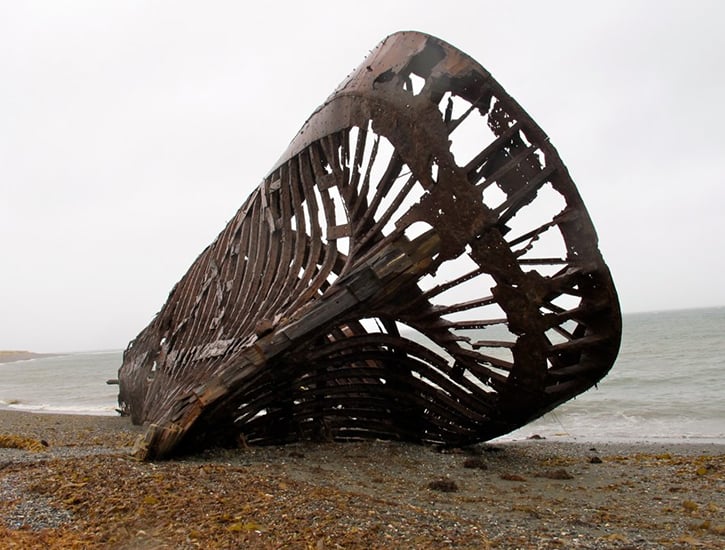Some 480 million miles away,anal sex videos of no por mi culo an ocean — harboring perhaps twice the water of Earth's seas — sloshes beneath the icy surface of Europa. NASA's going there.
This moon of Jupiter has long intrigued planetary scientists, as a number of missions have swooped by the world's cracked, icy crust. Now, for the first time, a spacecraft is dedicated to investigating the moon. It's slated to launch in October.
"Almost time to spread our wings!" NASA posted online this week. "At @NASAKennedy, our spacecraft has been outfitted with its solar array 'wings.' They're not only huge, but strong enough to withstand the harsh conditions around Jupiter's intriguing moon Europa."
What's more, the space agency has confirmed that a crucial part of Europa Clipper's infrastructure — the transistors that regulate the craft's electricity — just passed tests. Earlier this year, an agency evaluation raised concerns that intense levels of radiation around Jupiter could impair the mission.
"The Europa Clipper mission team recently conducted extensive testing and analysis of transistors that help control the flow of electricity on the spacecraft. Analysis of the results suggests the transistors can support the baseline mission," NASA wrote on Aug. 28. (The baseline mission means flying by Europa nearly 50 times between 2031 and 2034, which will provide almost complete reconnaissance of the Jovian moon.)
 Europa's cracked, icy surface as captured by the Juno spacecraft in 2022. Credit: Image data: NASA / JPL-Caltech / SwRI / MSSS // Image processing: Kevin M. Gill CC BY 3.0
Europa's cracked, icy surface as captured by the Juno spacecraft in 2022. Credit: Image data: NASA / JPL-Caltech / SwRI / MSSS // Image processing: Kevin M. Gill CC BY 3.0 This Tweet is currently unavailable. It might be loading or has been removed.
The spacecraft is giant. It's "the largest spacecraft NASA has ever developed for a planetary mission," the agency explained. When its solar-array wings fold out in space, the over 110-foot (30.5-meter) craft will be longer than an NBA basketball court. The large panels are necessary because the distant Jovian region only receives three to four percent of the sunlight that Earth receives.
"At Jupiter, Europa Clipper’s arrays will together provide roughly 700 watts of electricity, about what a small microwave oven or a coffee maker needs to operate," NASA explained. "On the spacecraft, batteries will store the power to run all of the electronics, a full payload of science instruments, communications equipment, the computer, and an entire propulsion system that includes 24 engines."
A bevy of cameras, ground-penetrating radar, spectrometers, and beyond will scan the world below for water, eruptions of water, and the composition of Europa's ice. Beneath the ice, for example, there might be evidence that Europa hosts hydrothermal vents on its seafloor. On our planet, life teems around these deep-ocean vents.
"Beyond Earth, Europa is considered one of the most promising places where we might find currently habitable environments in our solar system," NASA said.
The huge spacecraft's launch opportunities open on Oct. 10, 2024, and after looping through the inner solar system, will arrive at Jupiter in 2030.
The observations will be unprecedented. But even more exploration could follow: A potential follow-up mission, called Europa Lander, will settle down on this extraterrestrial world and drill into the still-mysterious ice.
Previous:Keeping Balanced
 Heart Mountain to Hold Opening Event for New Estelle Ishigo Exhibit
Heart Mountain to Hold Opening Event for New Estelle Ishigo Exhibit
 Los Angeles Sparks vs. Chicago Sky 2024 livestream: Watch live WNBA
Los Angeles Sparks vs. Chicago Sky 2024 livestream: Watch live WNBA
 Huawei's tri
Huawei's tri
 Black bear in Glacier National Park refuses to leave its winter den
Black bear in Glacier National Park refuses to leave its winter den
 California Leaders Opposed to Sanctuary Law Meet with Trump
California Leaders Opposed to Sanctuary Law Meet with Trump
 Scotland vs. Australia 2024 livestream: Watch live T20 cricket for free
Scotland vs. Australia 2024 livestream: Watch live T20 cricket for free
 Buccaneers vs. Commanders 2024 livestream: Watch NFL for free in UK
Buccaneers vs. Commanders 2024 livestream: Watch NFL for free in UK
 Here are the last things Stephen Hawking wrote on Reddit
Here are the last things Stephen Hawking wrote on Reddit
 Artesia Man Reported Missing
Artesia Man Reported Missing
 Bipartisanship Has Sailed
Bipartisanship Has Sailed
 Rodney Tanaka Scores Big for Gardena
Rodney Tanaka Scores Big for Gardena
 This restaurant used ChatGPT to create a pizza for its menu — and it became a hit
This restaurant used ChatGPT to create a pizza for its menu — and it became a hit
 Outside the Text
Outside the Text
 Fritz vs. Tiafoe 2024 livestream: Watch US Open for free
Fritz vs. Tiafoe 2024 livestream: Watch US Open for free
 Construction Launches for Little Tokyo Gymnasium
Construction Launches for Little Tokyo Gymnasium
 Bears vs. Titans 2024 livestream: Watch NFL for free in UK
Bears vs. Titans 2024 livestream: Watch NFL for free in UK
 iPhone 16 Pro and iPhone 16 Pro Max leak: Video camera rumored to get this upgrade
iPhone 16 Pro and iPhone 16 Pro Max leak: Video camera rumored to get this upgrade
 YouTube to add tools to detect AI
YouTube to add tools to detect AI
 Investors Sought for Fund to Preserve Little Tokyo
Investors Sought for Fund to Preserve Little Tokyo
 Wordle today: The answer and hints for September 6
Wordle today: The answer and hints for September 6
Tesla wants customers to pay a $200 monthly fee for Full Self'Masters of the Universe: Revelation' Netflix review: It f*ckin' rulesHow to connect Alexa to a Bluetooth speakerFacebook's response to Biden's COVID misinfo criticism is a big missNokia revives the legendary 6310 phone with a larger, curvy displayApple's iPhone 14 Pro might come with a titanium body'Space Jam: A New Legacy' is a really long ad for Warner Bros.: Review20 Snapchat tips and tricks you might not know aboutDespised maker of TurboTax tells Americans the 'free' ride is overLucasfilm hires YouTuber who deepfaked 'The Mandalorian' Bugatti's new $4 million Tourbillon has the wildest steering wheel ever Colombia vs. Paraguay 2024 livestream: Watch Copa America for free Apple fixes scary Vision Pro bug that allowed hackers to fill your virtual room with spiders Shop Apple's education pricing and get a $150 gift card 'House of the Dragon' played the Evil Twin card, for better or worse Scientists discover how old Jupiter's Great Red Spot really is Poland vs. Austria 2024 livestream: Watch Euro 2024 for free YouTube tests new 'crowdsourced' fact Qimir has to be the 'The Acolyte's secret Sith Lord, right? West Indies vs. England 2024 livestream: Watch T20 World Cup for free
0.1429s , 14318.0859375 kb
Copyright © 2025 Powered by 【anal sex videos of no por mi culo】Enter to watch online.NASA's huge spacecraft will soon launch to alluring ocean world,Global Perspective Monitoring